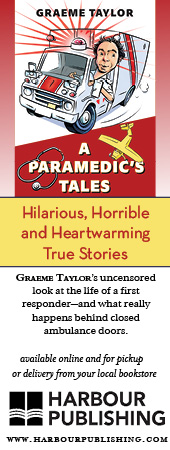We built submarines in Burnaby
It is one of the better-kept secrets of BC history. Not only did BC purchase two Seattle-built submarines in 1914. We went on to build submarines for export to the Russians at a hidden factory at Barnet in Burnaby.
October 20th, 2014

WW I submarines were built for the Russian Navy in Burnaby. (Burnaby Archives 466-016)
Nothing remains of the factory now other than a creek named in its honour, but in its heyday, safely concealed beside the CP rail line on Burrard Inlet, the British Pacific Construction and Engineering Company was a going concern.
Excerpt: “From the West Coast to the Western Front” by Mark Forsythe and Greg Dickson
The man behind the secretve submarine manufacturing company was James Venn Paterson, the same man who headed the Seattle shipyard that sold two submarines to Premier McBride on the eve of the Great War in 1914.
Burnaby seems an odd place to build submarines for the Russian Navy. And the story is a strange one.
Our allies, including the Russians, were anxious to buy submarines wherever they could find them. The Americans could build them but couldn’t sell them directly without contravening their own neutrality laws. So Paterson’s Seattle shipyard started looking for ways to build subs to their own patented specifications in Canada.
To keep the business, they set up the British Pacific Construction and Engineering Company at Vancouver. The company then found a quiet stretch of shoreline in Burnaby where they could build subs without attracting attention.
The site was closely guarded and the crews sworn to secrecy. And the work started. The design was good and the subs were built to be dismantled and shipped by rail or sea to customers who could then reassemble them closer to the theatre of war where they were needed.
“The works are surrounded by a high barbed wire fence,” a secret report stated, “…and search lights are being erected on the machine shops. There is a military guard of nine men there loaned by the Military, and already five submarines are laid down and well underway.” Over two hundred men were soon at work and that grew to over 450 working day and night shifts.
Russia was the first paying customer. It needed subs to defend itself against the German Navy and its Turkish allies in the Baltic and Black Seas. European shipyards couldn’t help, and the Russians were advised to see Paterson, who was glad to assist. The subs were to be shipped to Vladivostok, and then to travel by Trans-Siberian rail to Petrograd where they would be assembled for service in the Baltic. Three subs were shipped in December 1916. Eventually five would reach Russia.
As if getting submarines across Russia wasn’t complicated enough, in 1917 Russia was shaken by revolution. The submarines were caught up in the chaos as the Russian Imperial Navy crumbled away.
“Their careers were brief,” wrote historian William Kaye Lamb in BC Studies (Autumn 1986).”The AG-14 was lost with all hands in 1917, and the other four were all scuttled early in April 1918 at their base in Finland to prevent them from falling into the hands of the advancing Germans.”
A BC Regiment hat badge – over 6,000 British Columbians were killed before the war was over (credit: Greg Dickson photo)
If you want to find one of the Burnaby-built submarines, you might try travelling to the Baltic Sea. In June 2003 a diving company found the AG-14. The team was actually searching for a missing Swedish DC-3 that was shot down by the Russians in 1952 over the Baltic. They recovered the plane and also located the AG-14, missing since 1917.
It turns out that the captain of the AG-14 was none other than Antonius Essen, the only son of the Russian Admiral Nikolai Essen, head of the Russian Baltic Sea Fleet. Admiral Essen died suddenly of pneumonia in 1915. His family received another shock when son Antonius went down with his crew when the AG-14 hit a mine two years later.
(The Essens were actually ethnic Germans who for two centuries served loyally with the Russian Imperial Navy. Seven family members had been awarded the Order of St. George, Russia’s highest military decoration).
Back in Burnaby our submarine industry dreams came to an end when the Americans entered the war in 1917. Freed from the constraints of neutrality, submarine manufacturers could move back across the border. The secret Barnet factory was dismantled, leaving little behind but bits of wood and rusty metal.
Including stories, artifacts and photos from Mark Forsythe’s audience for his BC Almanac program on CBC Radio, Mark Forsythe and Greg Dickson’s From the West Coast to the Western Front: British Columbians and the Great War (Harbour 2014) marks the 100th anniversary of World War One.
Among those profiled is First Nations soldier George Maclean who won a Distinguished Conduct Medal, the second-highest award for gallantry available to non-commissioned officers and privates in the Great War. During the Battle of Vimy Ridge, armed with a dozen “pineapples” – Mill bombs also known as grenades – he launched a solo attack and captured 19 prisoners, getting wounded in the process. Maclean was a rancher from the Head of the Lake Band in the Okanagan who enlisted in Vernon in 1916, having previously served with the Canadian Mounted Rifles during the Boer War. Shot in the arm by a sniper during his heroics at Vimy, Maclean returned to Canada for treatment and became a fireman in Vancouver. He died in 1934.
Of the 611,000 Canadians who fought for King and Country in World War One, 55,570 were from British Columbia. That was the highest per capita enlistment rate in Canada. Of that contingent, 6,225 died in battle at a time when the overall population of B.C. was only 400,000.
$26.95
978-1-55017-666-7




Nice piece. See the video I made in 2014 to celebrate 100 years of Canadian subs…..
https://www.youtube.com/watch?v=0c2dmONUQNw